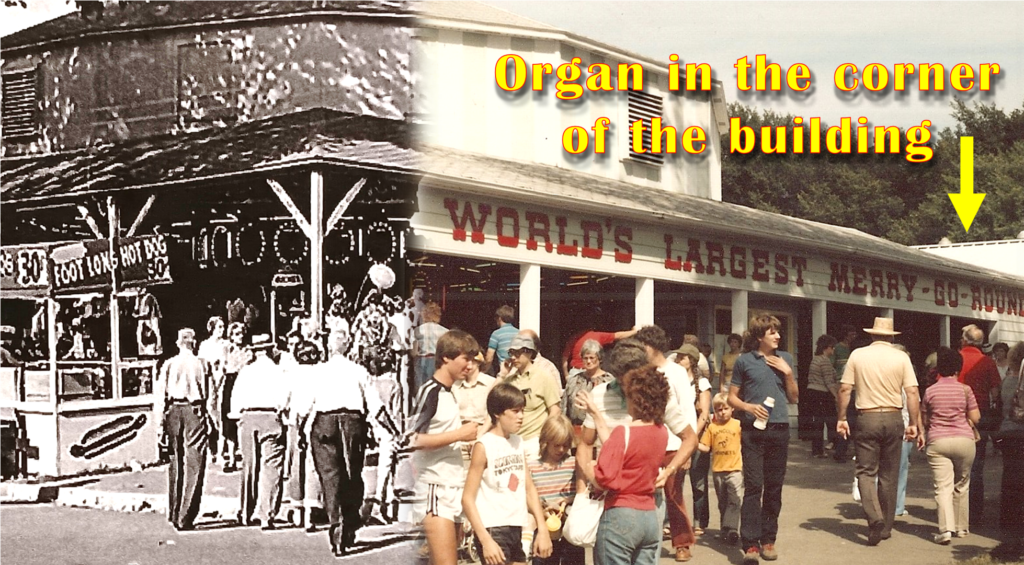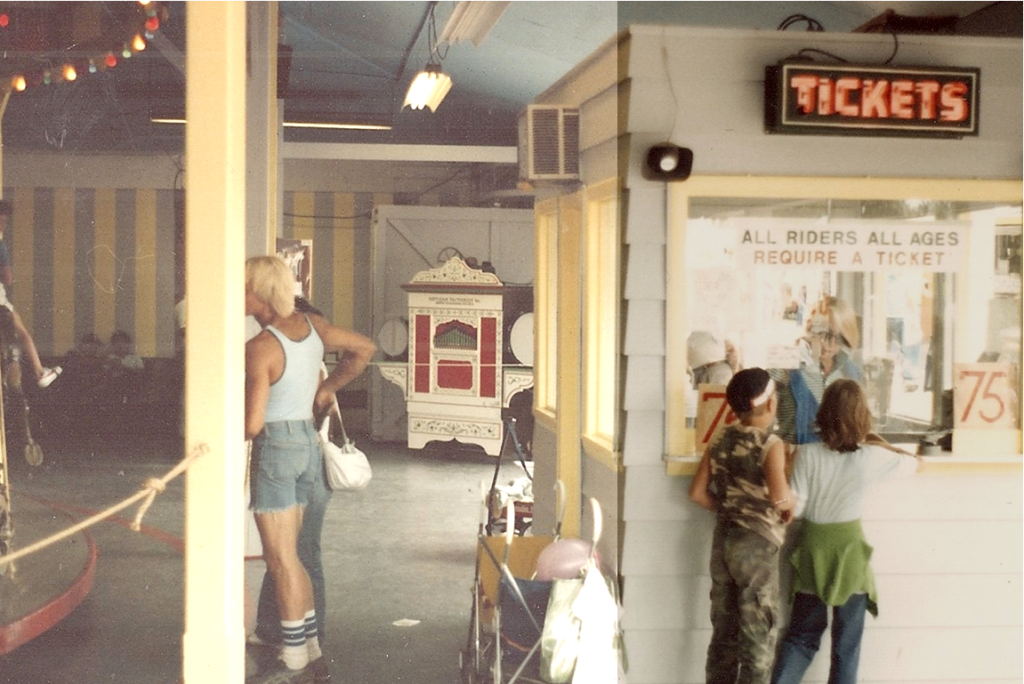Fire at the State Fair!
June 2nd is a significant date for Cafesjian’s Carousel. On that day in 1939, a fire broke out at the Minnesota State Fair which spread to the merry-go-round building. If not for the quick action of the Saint Paul Fire Department to douse the blaze, PTC-33 may have joined the hundreds of other classic carousels that were destroyed by fire!
Just like today, the State Fair grounds hosted events year-round. In 1939, a camping trailer had been parked at the southeast side of the carousel building along what was then Commonwealth Avenue (now Dan Patch Avenue). The owner of the trailer left a cook stove unattended, and a fire started which quickly spread to the carousel building. Fortunately, Engine Number Three’s crew from Saint Paul Fire Department Station 23 were on the scene in record time — the station was only two blocks away from the carousel at 1290 Snelling Avenue across the street from the State Fair’s Main Gate.


The firemen had to be very careful with how they put the fire out. Once the doors open, the oxygen would rush in and the blaze would grow exponentially. The fast-acting firemen trained their hoses on the closed doors of the building until the water was on. The large doors were flung wide open and a maelstrom of water was sprayed on the blaze. The fire was quickly extinguished, but not before it had done significant damage. The structure was saved with the exception of the southeast wall. The fire had swept up the ceiling of the wooden building and charred the heavy roof planks. Eight of the sixty-eight horses on the ride were scorched on their “romance” side, which faces out, while the sides facing the center of the ride remained unscathed.
The only “fatality” of the calamity was the band organ that provided the musical accompaniment for the carousel. Because of its large size, the automatic instrument could not sit in an organ’s customary position inside of the carousel platform. It was positioned in the southeast corner of the building, exactly where the fire first entered the structure. When the smoke had cleared and the damage was assessed, its case and ornate facade, hundreds of wooden organ pipes, and drums were nothing but charcoal. All that remained of the organ was the crankshaft which operated the air bellows, the 82-key duplex music roll mechanism, and four heavily damaged 82-key music rolls.
The type of organ used on the carousel has been a mystery until recently. Philadelphia Toboggan Company records do not include the sale of a band organ in conjunction with PTC-33’s order. Carousel owner Austin McFadden maintained several amusement franchises around the country and probably provided an instrument from one of his other attractions. A different, larger organ replaced the ride’s original instrument around 1922. In 2023, automatic music historian Fred Dahlinger provided research that suggests the organ was a Gavioli instrument that had been converted to play 82-key Artizan Factories paper roll music which is borne out by the fire remains.

Repairing the Damage
That summer in 1939 was certainly a hectic one for the carousel, now owned by Martin Schuemaker. The carousel had stood at the top of the “T” intersection of Commonwealth Avenue and Underwood Street. The Fair had decided to extend Underwood Street to the north, so the merry-go-round was disassembled, and the building was moved 100 feet to the east so the road could go through. (Presumably, the move was made after the June 2nd fire.) The carousel would remain at this location through the 1989 State Fair.
Schuemaker was faced with repairing the fire damaged carousel and may have employed the advertising and sign-painting firm of William Brede Inc. to accomplish the restoration work. Brede was no stranger at the Fair as he opened the beer gardens in 1933 at the close of Prohibition. (He would introduce the “Pronto Pup” in 1947 and would purchase the carousel in 1949.) Charring on the eight damaged horses was scraped off, a filler was used to seal the damage, and Brede’s artisans repainted the steeds to match their colors from the undamaged sides of the horses. The rounding board paintings above the platform were reproduced with less realistic designs, and “park paint” was used to add scroll details to the ride. (All of these repairs were redone and improved upon when Our Fair Carousel Inc performed a complete restoration of the ride starting in 1989.) Fortunately, the remaining 60 horses never had their paint altered and PTC-33 is one of only two antique carousels in the U.S. wearing its original paint. (The other is our “sister” carousel, PTC-6, the Kit Carson County Carousel in Burlington, Colorado, the oldest PTC carousel in existence, built in 1905. PTC built 87 carousels of which 35 are still extant.)
The move and restoration work were completed in time for the August 24th opening of the State Fair. A new band organ was not acquired for the ride. The advent of sound amplification and the availability of recorded band organ music on “Merri-Org” records provided the music on the ride for the next 50 years. In 1984, when the ride was owned by Brede’s daughter’s family, Mary and Bart Blinstrup, carousel and organ enthusiasts Mike Merrick and Tracy Tolzmann offered their recently restored 1883-vintage “Ruth-Artizan” band organ to provide live music on the ride for the first time in 45 years. For half the Fair, Mike and Tracy operated the organ to the delight of the fairgoers. In 1989, when OFC Inc operated the carousel for its 75th and final year at the Fair, the Ruth-Artizan returned for an encore performance. Gerard Cafesjian, the entrepreneur for whom the carousel is named, purchased a Wurlitzer 153 band organ which Mike restored and which now merrily accompanies the carousel in the Cafesjian Pavilion in Como Park.
The actions of a crack fire crew 86-years ago have a direct connection to the enjoyment of thousands of passengers on Cafesjian’s Carousel. Over 2,500 merry-go-rounds had been built by 1930. Only 250 remain to be enjoyed today. If not for the Saint Paul Fire Department’s expertise, PTC-33 may have joined the hundreds of carousels which succumbed to fire.
Tracy M. Tolzmann

